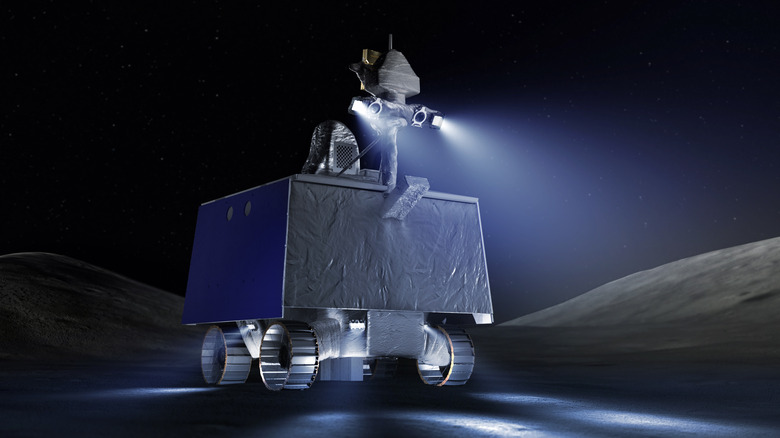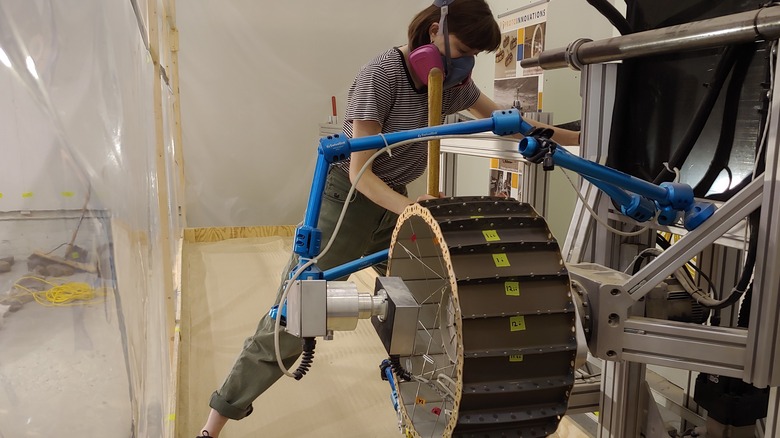Everything We Know About VIPER, NASA's Water-Hunting Lunar Rover
NASA has big plans for the moon. From its Orion capsule, which will carry astronauts to the lunar surface, to plans to build a nuclear power station there, the race to get humans back on the moon and even into a long-term moon base is on. But if people are going to be sent to the moon for more than a few days, they're going to need access to certain resources, and one of the biggest needs is water. Recent research has found that there is water on the moon, and maybe more than we thought previously, especially in the form of ice in craters around the poles. But to take advantage of this resource, first, we need to locate it, and that's what NASA's VIPER mission aims to do.
VIPER, or Volatiles Investigating Polar Exploration Rover, will be a lunar rover sent to search for ice and other resources that could be useful to future human explorers (via NASA). It will search around the moon's south pole, in particular, hunting through craters for evidence of ice there. Because of this — and because of the dust covering the moon called regolith — the rover's wheels and suspension system have to be specially designed to handle traveling over and through craters.
The regolith provides a particular challenge. Because the moon has no atmosphere, it has no wind. That means dust particles don't get worn down through abrasion the way they do on Earth or on other planets that do have atmospheres. For this reason, the regolith on the moon is sharp like broken glass and gets into hardware and eats away at it (via NASA). VIPER's wheels are designed to be particularly hardy to handle this.
Water-hunting equipment
To help it in its task of locating ice deposits, VIPER will have four instruments. Firstly there is a hammer drill for boring down into the moon's surface to look for ice there called the Regolith and Ice Drill for Exploring New Terrains (TRIDENT). Then there are three spectrometer instruments that can analyze the composition of samples by looking at the light they emit called the Mass Spectrometer Observing Lunar Operations (MSolo) instrument, the Near Infrared Volatiles Spectrometer System (NIRVSS), and the Neutron Spectrometer System (NSS).
The TRIDENT drill will be around 3.2-feet long, allowing the rover to reach deep beneath the moon's surface, and it is a special type of drill called a rotary percussive. Unlike the typical drill you'd have at home that only spins, this one both spins and hammers so it can get through tough material like hard rocks. Two of the three spectrometers can detect hydrogen molecules and determine what type of molecules these are (such as whether they are lone hydrogen atoms, water, or a different molecule called hydroxyl). And the third works to determine what gases are coming from the lander rather than the moon itself to prevent a false reading.
These instruments will allow the rover to get a whole new view of the moon. "VIPER will be the most capable robot NASA has ever sent to the lunar surface and allow us to explore parts of the Moon we've never seen," said NASA program scientist for VIPER, Sarah Noble. "The rover will teach us about the origin and distribution of water on the Moon and prepare us to harvest resources 240,000 miles from Earth that could be used to safely send astronauts even farther into space, including Mars."

